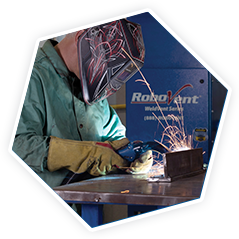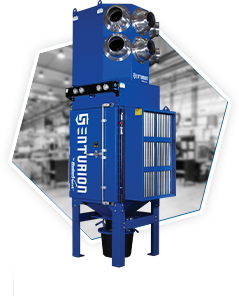Complete Guide to Ambient Fume Extraction
Ambient Filtration vs. Source Capture: What's the Difference?

- Source Capture: Source capture involves collecting contaminants (like dust, fumes, smoke, etc.) directly at their point of origin before they disperse into the air. This is done using devices like extraction arms, hoods, or local exhaust ventilation systems placed close to where the emissions are generated. This method is highly effective at preventing pollutants from entering the workplace environment, as it captures contaminants at their highest concentrations. Source capture solutions are particularly useful in processes where contaminants are produced at identifiable, consistent locations, such as welding stations, soldering benches, or specific machinery.

- Ambient Capture: Ambient capture, also known as general ventilation or ambient air filtration, involves treating the air in an entire area or building. This method uses large air cleaners or dust collection systems with filtration to remove pollutants after they have dispersed into the workplace environment. While effective at improving overall air quality, it is generally less efficient at capturing high concentrations of contaminants compared to source capture. It is also not efficient at capturing heavier particulates that tend to fall out of the ambient air. Ambient fume collection systems are ideal for collecting light, airborne particulate in environments where contaminants are dispersed or where source capture is impractical due to the nature of the work or layout constraints.
Ambient vs. Source Capture: Making the Choice
The choice between ambient and source capture systems depends on the type, volume and hazard level of the contaminants, where contaminants are generated, and the layout of the facility. In many industrial settings, a combination of both ambient and source capture systems is often employed to achieve optimal air quality and ensure compliance with health and safety standards. This integrated approach leverages the strengths of each method to effectively control airborne contaminants.
Table: Ambient Air Filtration vs. Source Capture – Pros, Cons & Applications
Need help choosing between source capture and ambient systems?
TALK TO AN EXPERT
Want to learn more? Talk to a dust, mist and fume expert today by filling out the fields below.





